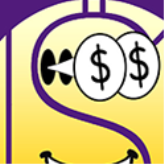My students know that when it comes to trading markets, I like to understand the economic fundamentals driving price action. I also like to find actionable solutions to make monster sized profits. I'd like to publicly share one with you today.
I’m getting a lot of questions of late in regard to everything to do with markets, but the bond market especially. If you want to know where everything is going, there is only one place to look.
Interest rates.
Interest rates tell us the price of money. Credit cards and other unsecured debt move with great volatility when interest rates move. Secured debts like mortgages of all types also move. So do business loans and factored receivables loans. Even a loan with a fixed rate over a fixed period, will eventually attain a new rate if it is rolled over instead of paid off at maturity.
When rates rise, the cost of business rises. When rates fall, so too the cost of doing business falls.
Sure, there are lots of other factors. They are secondary to interest rates, and though they play a role, none have the same impact as rates.
And that brings me to our Fed. The Fed is raising rates. Have you noticed that stocks are falling? How about the price of bonds? Real estate is about to fall. Unemployment claims are no longer falling, but the economy is. GDP in the first quarter this year was -1.4%, and the Atlanta Fed GDP Now tracker just revised down the second quarter from 1.1% growth to 0.0%.
With the recent Fed hike of 75 bps, the overnight rate is now 1.75%-2.0%. In a normal, healthy economy we would expect the 10 year treasury, the benchmark for all other rates, to be about 2.0-2.5% above the overnight. That means that the 10 year should be around 3.75%-4.5%.
Since the hike though, treasuries have fallen unexpectedly. The 10 year is now at 3.125% at the close of June 24, 2022. It is my conclusion that the bond market is calling out the Fed for a policy error in raising rates, and bond traders think the Fed should rather sit tight at the very least, if not lower rates immediately. The problem here is the Fed is set on raising rates again at the next meeting in July by 75 bps, and again in September by at least 50 bps in an effort to fight high and rising inflation numbers. Jay Powell has made it crystal clear that fighting inflation shall take precedence over all else. He's proven himself a man of his word, and there is no reason yet to doubt what he told us.
In addition to raising rates, the Fed is actively selling bonds at $15B monthly, which will rise to $95B monthly by the fall. This will put further downward price pressure on bonds, which means the rates are guaranteed to rise. This is one of the only guarantees on Wall Street, that the yield and price of bonds move opposite of each other. Like a children’s seesaw, if one goes up the other goes down.
So we have the rate being pushed up by the Fed and the price being pushed down through sales, which further raises rates. It’s a double-whammy to bonds.
Regardless of what the bond vigilantes are telling us about a Fed policy error, the Fed is intent to proceed. Thus we have the error of the bond market. The bond market wants to call out the Fed, but the bond market is mistaken. Even if the bond market is right that the Fed should not proceed to push rates higher, the Fed will proceed anyway. The bond market has it completely wrong, based on wishful thinking about the economy or whatever their collective train of thought is.
The bond market is wrong about this Fed and I am calling out the bond market on this mistake.
This begs two questions:
- What can we expect out of bonds?
- Where should you put your money to benefit? (this was a hint)
Before I answer either question, please understand that the current Fed actions are quickly driving the economy into recession, if we are not already there, and Washington politicians from either party won’t be able to blame Putin for this one. There is plenty of publicly available evidence to show we are on the brink of recession, and while each piece is not a bullseye, combined together the whole is greater than the sum of the parts.
So, what happens to bonds? Especially in a recession if that is where we are heading?
The last time I researched and wrote about this topic, about 5 years ago, I found that approximately 75% of all corporate bonds will be down graded by two notches during a recession. Most of the rest will be down graded by one notch. According to Sifma, currently there is about $10T of corporate bonds in the US, with over 50% at the BBB level, and over 60% A or BBB; so you can do the math of how much will go to below investment grade. Once a corporate is at any level below investment grade, there is statistically a 30% chance of default in recession.
None of this accounts for companies who are considered zombie companies by the IMF, which is currently somewhere around 15%-20% of all corporate bonds. The next time they try to refinance their loans, just to be able to service or pay off the current loans, they won’t be able to. Rates are higher now and rising. If these corporations could not service their loans with historically low rates, what will they do now that rates are on the move higher? You don’t have to be a genius to figure it out, or a CPA, or math geek.
The base case scenario is recession combined with the most hawkish Fed in recent history, with a dual action of raising rates and selling bonds. Both of these actions by the Fed will cause a recession (which means that the other half of the dual mandate of full employment is out the window). In a recession companies will see less revenue and a smaller bottom line earnings. That will deepen the difficulty of servicing debt, and increase the likelihood of default.
The key takeaway is junk bonds, aka high yield, aka fallen angels, aka non-investment grade. The biggest profit opportunity in the market right now is junk bonds. I am currently short junk bonds (disclosure), but that is not why I think it’s a good idea. I think it’s a good idea because the Street has not given the full value to the price of this move.
Since the end of January I have made anywhere from 150%-530% going short of junk bonds, and with recession looming, rate hikes, and bond sales, the logical conclusion is that with current Fed actions combined with a stagflationary recession, the trade will continue to improve. Even if Powell and his Fed stop hiking and reverse course, which implies we are in a recession, it will still be a profitable move. Why? Remember what happens to junk bonds in recession and that is the answer.
As noted above, the bond market is attempting to call out the Fed for a policy mistake. I am calling out the bond market as making a mistake. Bonds will continue to fall in price and rise in yield, the economy will fall to recession, and junk bonds will move precipitously lower in value.
For most retail investors, it’s difficult to directly sell short junk bonds. Even if you could, you’d have to be an analysts par excellence to find the best opportunities for profits while simultaneously reducing your risk. So we have to find another easier and less risky way to do it. One way is to ask Google what are its favorite junk bond ETFs? Selling call options that will expire worthless is one way to profit. You can profit 100% but your loss is unlimited. Buying long inverse junk bond ETFs or buying calls on those funds is another. On these you can lose 100% but your profit is unlimited.
My favorite though by far, with the most upside potential and least downside risk, is finding those junk bond funds and buying put options. Many of these puts are already fully priced, but even more are underpriced by the market, with real values much higher than the market is currently asking. Buying put options on junk bond ETFs has 100% possible losses, but also unlimited possible gains.
If you plan to do this, you must make sure that you underpay for the option contract, as options always revert to their intrinsic value. Personally, I like to use the Black-Scholes valuation model. Sure, it is flawed. So are all the other models. Any of them will give you a ballpark figure to work with, and when you find a put option that is priced in the market 50%-80% below intrinsic value, you know you have a winner.
I’ll give you one freeby. IGIB January 20 2023 44P is selling for about $0.30-$0.35. The intrinsic value is around $1.15-$1.20. As the spot price on IGIB falls further, the market price of the put options will rise. As it falls below $44, the put options will respond by at least the difference between the spot price and strike price, if not more. Hint #1: do your own due diligence. Hint #2: don’t nickel and dime your limit entry. In this example, even if you pay $0.45, sell half your contracts at $0.90, and close out at $1.20, you’ll more than double your money.
As i've been known to say, there's always a bull market somewhere in the world.




Nice!